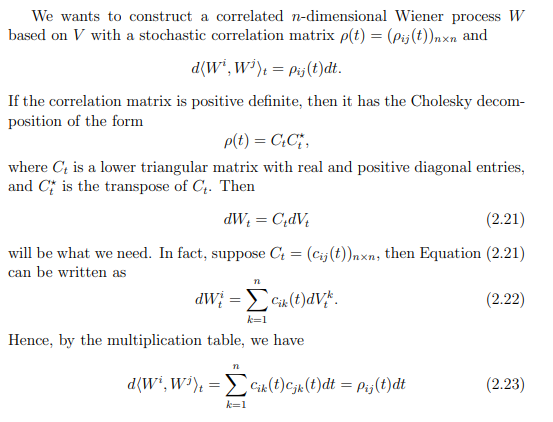let's consider an sde of this kind:
\begin{equation} \label{eq:system} \begin{cases} dX_t=b(t,X_t,Y_t)dt+\sigma(t,X_t,Y_t)dW_t \\ X_0=x_0 \\ dY_t=B(t,X_t,Y_t)dt+C(t,X_t,Y_t)dW_t^2 \\ Y_0=y_0 \end{cases} \end{equation} where t $\in [0,T]$, $T$ is the time horizon , $x_0 \in \mathbb{R}^d$, $y_0 \in \mathbb{R}^l$, b, $\sigma$, B, C are Borel functions and $(\Omega, \mathcal{F}, \mathcal{F}_t,W_t , \mathbb{P})_{t \geq 0}$ is a continuous standard $\mathbb{R}^d$-Brownian motion and $\{ W_t^2 \}_{t \geq 0}$ is a continuous standard $\mathbb{R}^l$-Brownian motion on the same filtration having instantaneous correlation $\rho \in (-1,1)$ \begin{align*} \mathbb{E}[dW_t^i dW_t^{2,j}]=\rho dt && \forall i \leq d, j \leq l \end{align*} Do the classic theorem of existence and uniqueness of strong solution holds also for this system? Do you have any reference? Thank you all in advance!

